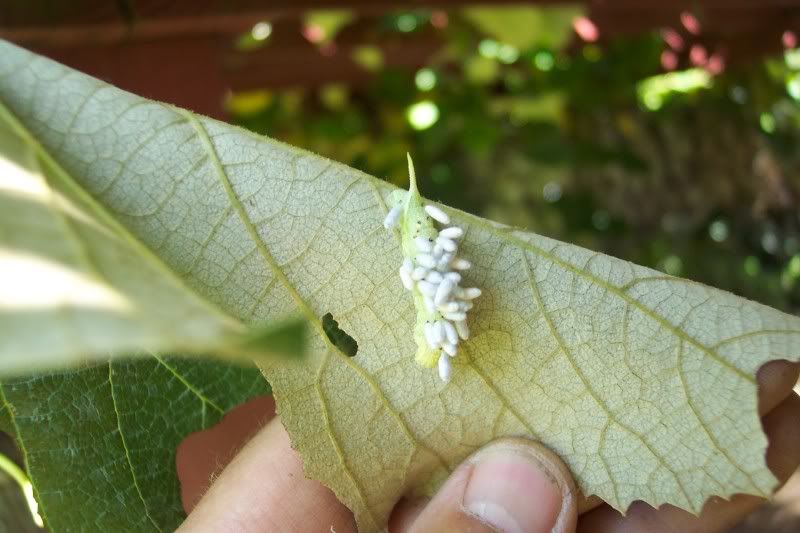I came across this horn worm on our grapes this morning. There were over 2 dozen white objects attached to its body.

It had been parasitized by another insect, most likely some species of wasp.
These types of wasps reproduce by depositing their eggs with their stinger into a host insect. In this case the unsuspecting insect is a horn worm.
The eggs soon hatch inside the caterpillar’s body. The newly released wasp larvae then begin to feed on the “innards” of the host insect while it’s still alive.
When the young wasp larvae have grown to sufficient size, they form”cocoons”, those white structures you see on the back of the caterpillar. The wasp larvae undergo a transformation inside the cocoons and emerge as fully developed wasps.
You can see by the size of the cocoons that these wasps are tiny compared to the paper wasps or hornets we normally see buzzing around the picnic table.
Let the balance of nature help you in your garden. When you see a caterpillar that looks like this, don’t squash or spray it, let the new wasps be “born”. They will soon be flying around looking for more caterpillars in your garden to parasitize.
By the way, this type of wasp does not sting or disturb people.
Bob